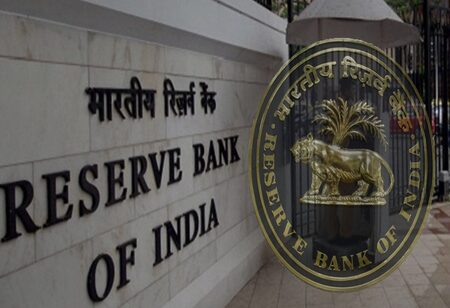Indian Central Bank Delivers Final Rate Increase Of Cycle As Mentioned By RBI MPC
By Consultants Review Team
 Indian central bank is projected in delivering the final interest rate increase in the current tightening cycle, despite signs of cooling inflation and weakening growth.
Indian central bank is projected in delivering the final interest rate increase in the current tightening cycle, despite signs of cooling inflation and weakening growth.
34 out of 40 economists in a Bloomberg survey expect the Reserve Bank of India’s six-member Monetary Policy Committee for moving by a quarter-point Wednesday, with the rest seeing a pause after 225 basis points of increase for maintaining repurchase rate since last May.
The median of economists surveyed separately for the year-ahead outlook predict the rates terminating at 6.50% this quarter and the MPC standing pat for the rest of the year. That projection is based on expectation consumer-price growth, which returned to the RBI’s 2%-6% target in November, will stay within that range in 2023.
A fiscally prudent annual spending plan, unveiled by Prime Minister Narendra Modi’s government last week, also boosts the case for pausing the tightening cycle. That will allow policymakers to support the economy, amid expectations for the pace of expansion to slow in the fiscal year beginning April. Still, Governor Shaktikanta Das and his rate-panel colleagues have reason for caution: a stronger-than-expected US jobs report might keep the Federal Reserve on course for more rate hikes, while the rupee is the worst performer in Emerging Asia this year amid stock outflows triggered by Adani Group’s woes.
Here’s what else to watch for as Das announces the rate decision through a webcast at 10 a.m. in Mumbai Wednesday, and addresses a press conference later at 12 p.m.:
Analysts will watch for signals on whether this will be the end of the current hiking cycle. Signs of divergence among rate-setters already appeared in the last policy meeting when one member opposed the 35 basis-point increase, and two resisted the RBI’s focus on “withdrawal of accommodation.”
“We suspect that more committee members will follow in voting to change the stance to neutral this time round, while also dialing back the hawkish rhetoric,” said Shilan Shah of Capital Economics Asia Pte.
The central bank’s commentary on inflation will also be closely watched, given China’s economic reopening could fuel demand and exert upward pressure on global commodity prices. The RBI’s previous projection was for price growth of 5.9% in the quarter to March, and 5% in the April-June period and 5.4% in the three months to September.
Stickiness in core inflation, which strips out volatile food and fuel prices, has emerged as a worry for policymakers.
A 25 basis-point hike will address some of the core inflation stickiness concerns, said Samiran Chakraborty, an economist at Citigroup Inc., adding that the budget’s “conservative fiscal policy would imply that the monetary policy would not have to do double duty to take care of macro stability.”
Bonds logged their best week since November after Finance Minister Nirmala Sitharaman stuck to fiscal prudence and surprised with a lower-than-estimated gross borrowing number. A dovish RBI may nudge yields lower after staying range-bound in the past two months. The offshore swap markets are also pricing in one last move before a long pause.
“It is hard to say if RBI’s rhetoric will add to tailwinds as they juggle some softening of still high inflation pressures,” said Lin Jing Leong, a rates strategist at Columbia Threadneedle Investments in Singapore. “Regardless of what is said, with RBI increasingly approaching the end of its rate hike cycle and the high carry of Indian government bonds, this is still an attractive trade.”
Indian policymakers and regulators have rushed to assuage investors rattled by the selloff in Adani Group shares following allegations of fraud by Hindenburg Research. As the rout enters its third week, investors will watch out for signs of further volatility as the focus turns on how the embattled firm will finance its debt obligations.
While the RBI last week said the country’s banking sector was “resilient and stable,” Governor Das might face questions at the media briefing on any regulatory tightening measures and further steps by lenders should the crisis worsen.




